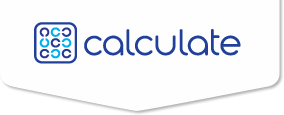An Enrollment Management Strategy to Offset the Federal Overtime Rule

Up to now, colleges and universities have been able to relegate the position of admissions counselor to entry-level status, requiring long hours for relatively low wages. Consequently, turnover in the position has historically been high – although expected by administration. This rationale seems a bit foolish. Although saving money with low salaries helps the short-term financials, the cost of turnover in the long-term far outweighs any short-term benefits. Additionally, considering the influence of the admissions counselor’s position — often serving as the first personal and most frequent point of contact — shouldn’t they be treated with more care? Don’t you want them to be passionate and devoted ambassadors of your brand?
All of this might change, however, when the new law comes into effect. Institutions will have a choice to make. They can either increase salaries or pay overtime.
Inbound Marketing to the Rescue
Let’s consider a third choice. What if you could keep your counselors at their current salaries but adjust the tactics they utilize to more efficiently fill the admissions funnel? In this scenario, they’re working less (no overtime) and yielding the same (if not greater) results.
The solution is to focus counselors’ time less on outbound marketing tactics and more on inbound marketing tactics. Instead of casting a wide net and hoping (sometimes praying) to catch some fish, inbound marketing attracts the right fish to your ship and then helps them come aboard.
If we look at the tactics admissions counselors employ to recruit students, travel seems to be the most time-consuming. The hours spent on the road add up. At its core, travel is an outbound marketing tactic. You’re setting up shop in a large room (along with dozens of competing institutions) and hoping to hook prospects. Even if you do, the probability of these inquiries being right-fit isn’t guaranteed, so you need to hook a lot of fish in order to meet enrollment goals.
On the other hand, effective inbound marketing lures prospects to you naturally. This can be done through search engine optimization, pay-per-click marketing, or content marketing. Because prospects are finding you on their own, the probability of them being right-fit for your institution is high and less of them are needed to meet enrollment goals.
At one institution, we were able to track the source of inquiries during a complete enrollment cycle and the numbers support this point. Travel generated 3,125 inquiries that resulted in 82 deposits for a 2.6% yield. The website, utilizing inbound marketing tactics, organically generated 454 inquiries that resulted in 82 deposits for an 18% yield.
Travel
| Website
|
How many hours did it take those counselors to yield those 82 deposits? Imagine if more resources had been devoted to digital marketing? This particular institution could have rendered travel non-essential. That would have freed up the counselors to spend more time on additional tactics, as well as given them time to establish personal relationships with the prospects in their funnel. Those one-on-one connections between counselors and prospects are critical to enrollment and this solution will give your counselors more time to cultivate them.
The rules are changing and so should your enrollment strategy, but not just because of the overtime rule. Today’s prospects are part of the digital generation and your marketing tactics should match their behaviors. Institutions that embrace digital strategies sooner will have a definite enrollment advantage over those still dipping their toes in the water.



